Wheels Within Wheels: Chapman Joins the Fashion Jungle
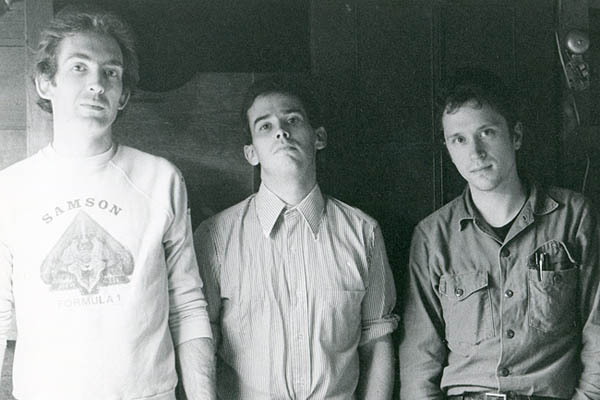
An image from a 1982 Fashion Jungle publicity shoot, featuring new guy Steve Chapman, at left. Ken Reynolds is in the center and I’m at the right. Photo by self-timer/Hubley Archives.
See a gallery of images from a 1982 Fashion Jungle publicity shoot. Click on an image to enlarge (in slideshow mode, click to go to next image).
Existential commentators from the Roman tragedian Pacuvius* to Gene Clark have remarked on the wheel of fortune, the random engine of joy and suffering that seems to direct our lives. (*I never heard of him either. Thank you, Wikipedia.)
First you’re up, as Gene sang it, then you’re down again.
The wheel was spinning me two ways at once in autumn 1981. On the down side, as noted previously in this space, my band, the Fashion Jungle, was apparently falling apart just on the eve of its local breakthrough. Simultaneously with a string of fun, creatively auspicious and crowd-pleasing performances came announcements of impending departure from multi-instrumentalists Mike Piscopo and Jim Sullivan.
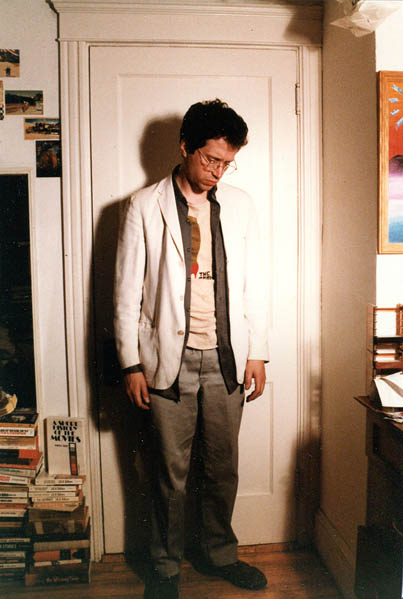
First you’re down . . . Symbolically sporting a sport coat, army shirt and the FJ logo T-shirt, I mourn the demise of the original Fashion Jungle. The logo, a shapely leg in camouflage hosiery and scarlet shoe, was designed by Kathren Torraca, later the FJ’s keyboardist. Photo by self-timer; Hubley Archives.
I didn’t like it, but I didn’t blame them (much) for going. I understood that if you have to work a crap job to put bread on the table, it’s still a crap job even if you have the best band in the world on the side.
I also learned, somewhat later, that Mike and Jim might have stayed around if drummer Ken Reynolds and I had committed to being in the band full time. And I can’t speak for Ken, but I couldn’t do it.
In contrast with my bandmates (and in betrayal of the punk-rock ethos of the day), I had just gotten comfortable. I was working in the industry of my dreams, journalism, at the Portland newspapers of the Guy Gannett publishing empire.
In addition to my weekend job in the Gannett clip library (we never called it the “morgue”), that summer I had begun to publish as a music writer, encouraged by features editor Jon Halvorsen. (My first byline appeared on an Evening Express story about the emergence of a punk/New Wave scene in Portland.)
Days I was attending the University of Southern Maine, reading Kafka and writing about the role of the middle class in the French Revolution. But as nice as the book-learning was, the best thing about USM was the girl I found there. An artist, Gretchen Schaefer and I met in a philosophy-of-art class in September 1981, hit it off big time, and were dating by November.
In fact, our paths had crossed previously, if anonymously. The first time was in 1980 at the Downtown Lounge, where we were both out carousing with friends and our respective partners. (I understood from G. later that it was a rare night out for her, a break from the grueling schedule at the dairy farm where she and her husband worked.) She was wearing striped overalls and looking very winsome. I took no action except to form an indelible mental image.
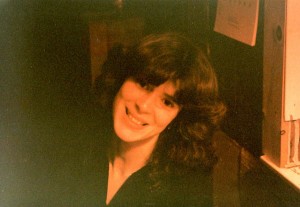
. . . then you’re up again. Gretchen Schaefer on New Year’s Eve, 1981, Parson Smith House. Hubley Archives.
The second encounter was at the Gannett library. Filing photographs one day in July 1981 (they were made of paper in those days, you young whippersnappers!), I came across a portrait of Gretchen taken at “Parson Smith Day,” an old-home-days kind of affair at the historic property in Windham where she was the docent.
She was spinning wool; her own hair was pulled back showing off her face, which wore an expression of concentration; she was sporting a short-sleeved top, along with various long flowing other things more appropriate than the top to a celebration of 18th-century technology.
Altogether very winsome, as well as strangely familiar. (Later I realized the Parson Smith and DTL women were the same woman.) This time I took action. I stole the photo.
Then came USM, philosophy of art, my invitation for a first date — “We could go mug people”; you never know what’s going to strike a chord — and away we went.
Still going, in fact. So in wheel-of-fortune terms, very upside. After years of slinging boxes in the Jordan Marsh stockroom and beating my head against no-love’s brick wall, life — aside from the FJ’s travails — was feeling very good in my brain.
And even as Mike was saying his good-byes (Jim stayed around into early winter 1982), the music wheel spun upward again with the appearance of Steve Chapman, a bassist, composer and singer. I think Steve came to us through an ad in Sweet Potato, the Portland music tabloid. He was married, had a child, cooked at a Middle Street restaurant and was a guitarist as well as bassist. I still remember our first meeting, in my parents’ basement in South Portland.
I started to write just now that Steve brought a whole new musical sensibility to the FJ, but that’s not quite true. Actually, while I’ve always had distinct (if not necessarily accurate) impressions of the musical character of anyone I’ve ever played with, impressions are all they were. Only recently have I thought more analytically, and hopefully objectively, about my collaborators’ interests and contributions.
So Steve had in common with Jim Sullivan a grasp of music theory far surpassing anyone else in the FJ at that point. Where Jim’s music was more angular and Steve’s more lyrical, both wrote sophisticated melodies that I learned from, and that continue to stand out in the band’s catalog. (In contrast, my melodies were complicated but not too sophisticated. I was just throwing notes and chords at the wall and hoping some of them would stick together.)
That musicality was apparent in Steve’s work on bass, too. He anchored the music as a bassist should, but — being a lead guitarist as well as bassist — was clearly unwilling to be limited to the foundational role, and was effortlessly able to embellish a song with both taste and imagination. That ability stood the FJ in good stead through our several years as a trio.
So there we all were in late autumn, 1981: G. and I embarking on a hot little fling that we swore wouldn’t last but is, instead, still being flung; and Ken, Doug and new guy Steve, creating the Fashion Jungle that, in the years to come, became a noted presence in the Portland alt rock scene. Even in the case of the wheel of fortune, there are wheels within wheels.
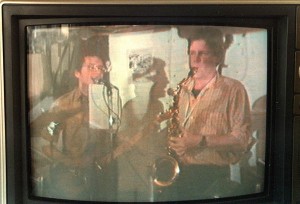
The Fashion Jungle on LaRue (not Johnny) TV: For reasons I no longer remember, one of the LaRue twins, scions of the South Portland Chrysler-Plymouth dealership, made a video of the FJ during the last weeks of Jim Sullivan’s tenure. I took this photo off a monitor at the dealership during my only viewing of the video, in 1982. I think we were playing Leonard Cohen’s “There Is a War.” Hubley Archives.
Enough with the blah-blah! Let’s hear some Fashion Jungle: recordings made during the first year with bassist Steve Chapman. The order is not chronological. Ken Reynolds, drums. Doug Hubley, guitar and vocals. Recorded in the Hubleys’ basement on the Sony TC-540, with a Shure Vocalmaster head as mixer.
- Sputnik (Chapman) This seldom-heard rocking instrumental was the first Chapman composition the Fashion Jungle learned. Fall 1982.
- Phoney English Accent (Hubley) Bitchy and self-righteous enough that I regret it now (but not enough to withhold it), this FJ standard was my response to the posturing that had infected American punk and New Wave by the early 1980s. The original FJ learned it, but never recorded a complete version of it; Jim Sullivan of the founding lineup plays the sax here. December 1981.
- Little Man, Long Shadow (Hubley) The lyric, inspired by a true story, likens a spurned lover to a terrorist. For some reason I was thinking of Andrew Malraux’s Spanish Civil War novel Man’s Hope as I wrote it, which led to my choice of something vaguely Spanish-sounding as the musical setting. The arrangement was inspired by a “New Romantic” band called Bow Wow Wow (some romantic name, huh?) that based all its material on extended drum rolls. Somewhat miraculously, the FJ recorded this complicated instrumental setting in one take. Summer 1982.
- End of the Affair (Hubley) Back to the December 1981 recording session with Steve and Jim, who plays organ. Again, the original FJ learned but never recorded this number, which I started at an inn up on the Midcoast over Labor Day 1981. Another of the angst-ridden tales of star-crossed lovers that I can’t seem to help writing.
- Groping for the Perfect Song (Hubley) A rough 1982 recording of a song that persisted throughout the FJ and right into the Howling Turbines days, 20 years later. I guess I was going through a little David Byrne period here.
“Sputnik” copyright © 1982 by Steven Chapman. “Phoney English Accent,” “Little Man, Long Shadow,” “Groping for the Perfect Song” and “End of the Affair” copyright © 2010, 2012, 1983 and 1984, respectively, by Douglas L. Hubley. All rights reserved.
Text copyright © 2012 by Douglas L. Hubley. All rights reserved.
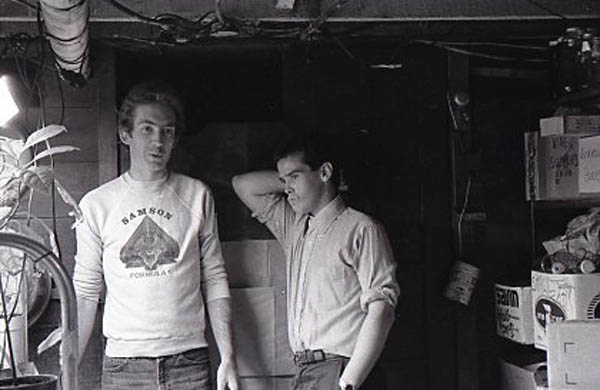
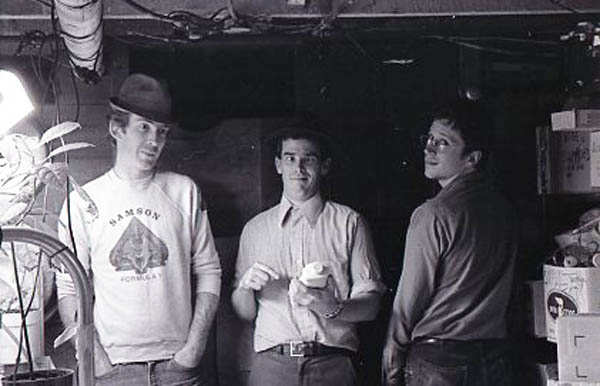
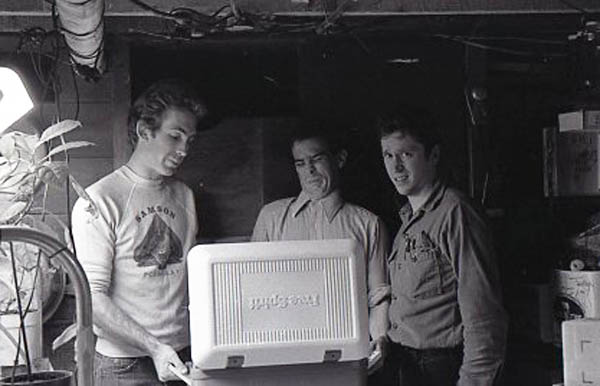
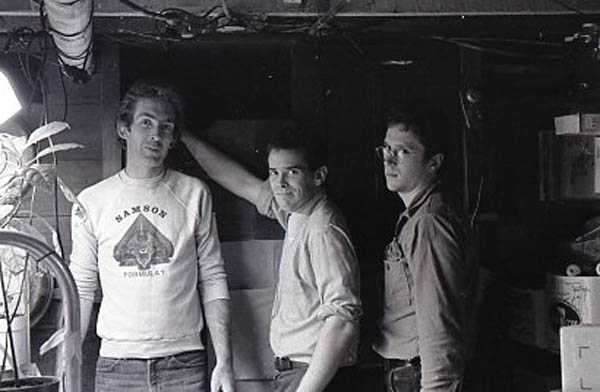
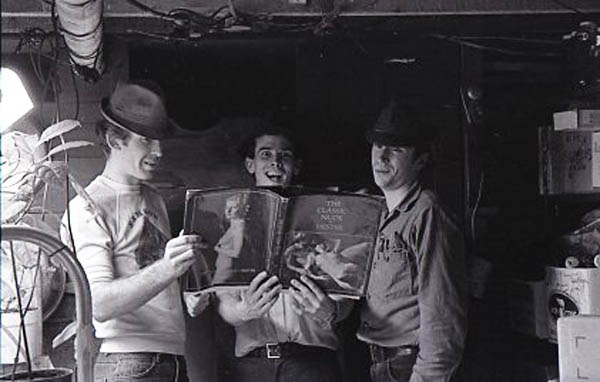
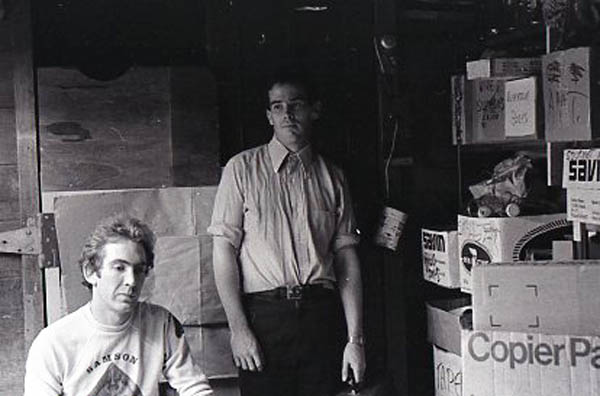
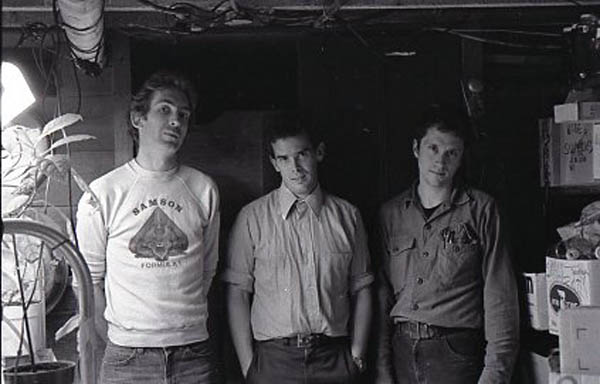
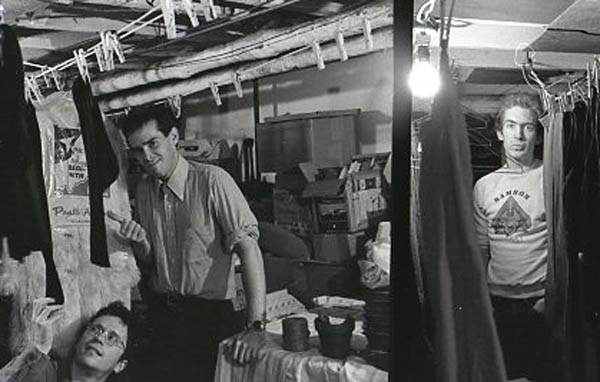
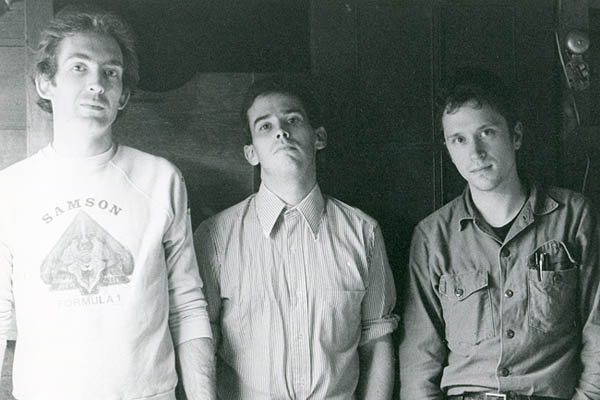
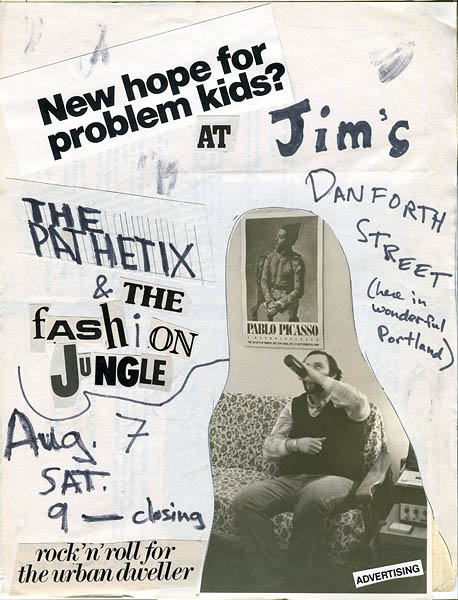
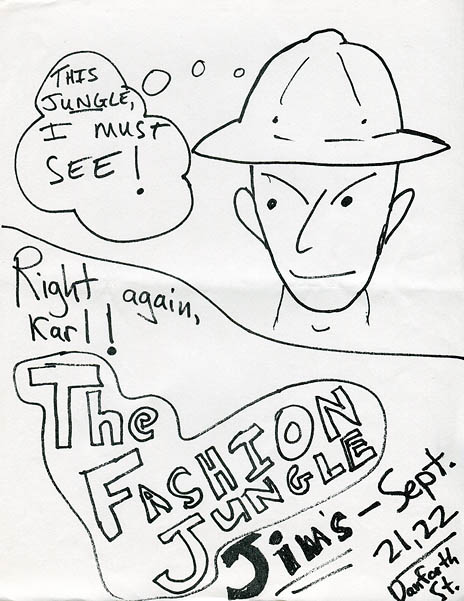
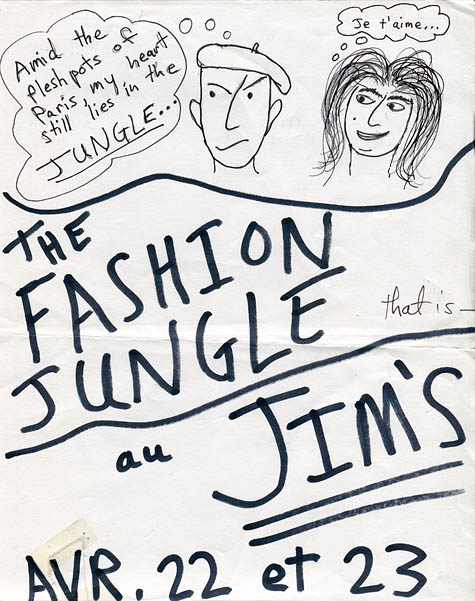
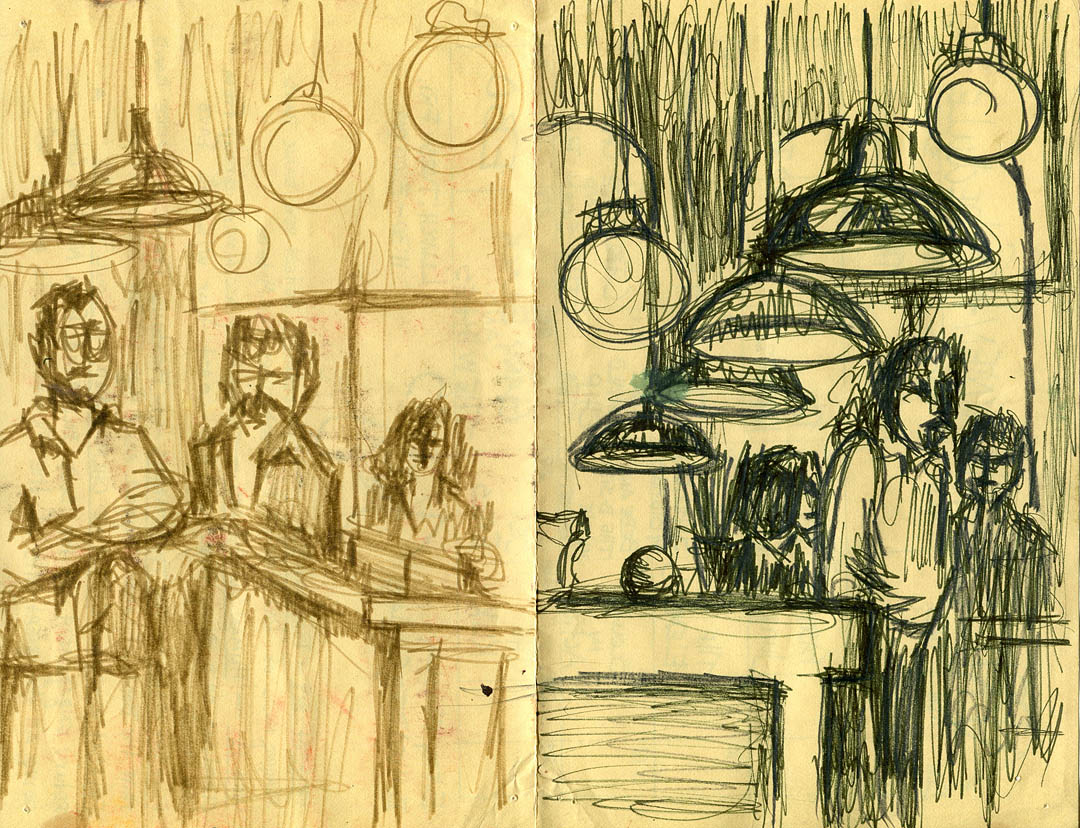
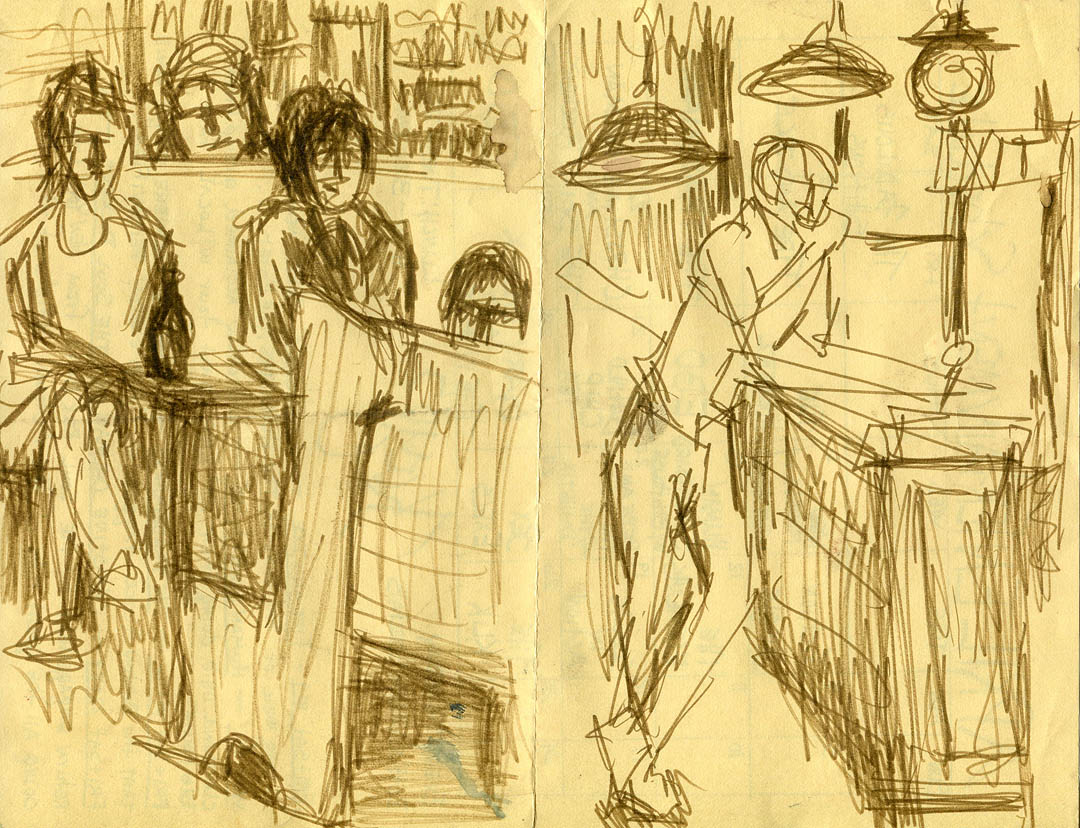

Pingback: » Other Voices: The Fashion Jungle, 40 Years Later Notes From a Basement